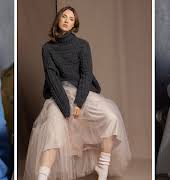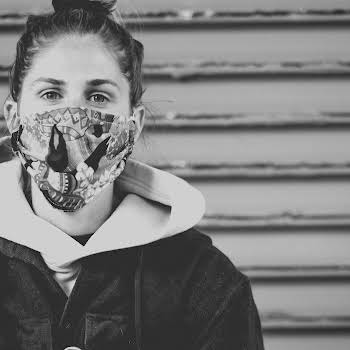
By Erin Lindsay
06th Apr 2020
06th Apr 2020
Conflicting messages have meant that we’re all a little confused about whether we should be wearing masks during the pandemic
To mask or not to mask? That is the question. As we move further along the Covid-19 curve, everyone is eager to find ways to protect themselves, and their family, as best they can against the virus. We have been told time and again that staying home is the best option, and we should all have greatly reduced our time spent outdoors by now. But for essential visits to buy food and supplies, exercise or to care for a vulnerable relative, we want to make sure that we are protected as much as possible.
At the beginning of the Covid-19 crisis, the public were told that face masks were only effective for use by those who are already infected with Covid-19, to avoid further spread of the virus. But now, we are seeing more and more conflicting reports of whether masks are necessary to protect us from Covid-19.
What do the health services say?
At the time of writing, the HSE’s website advises that wearing facemasks “is unlikely to be of any benefit if you are not sick”. They say that sick people “will be advised by their doctor” if they need to use a mask, and that healthcare workers need masks to protect themselves while working with infected patients.
The WHO’s official website advises those who are healthy that they only need to wear a mask when taking care of someone who you suspect has the virus. They also advise wearing a mask if you yourself are coughing or sneezing.
However, the WHO are hosting a panel of experts to discuss whether they should advise the public to wear face masks going forward. This comes as new research published in the US claims that coughs and sneezes can travel much further than previously thought.
The WHO says that their advice is constantly under review.
Here at home
Here in Ireland, Professor Martin Cormican, the HSE’s National Lead for Healthcare Associated Infection, spoke on the Six One news about the pros and cons of wearing facemasks. He said that improper use of masks, like constantly pulling them up or down, or wearing them with your nose exposed, can “do more harm than good”.
He maintains that social distancing and hand washing are still the best courses of action to combat the spread of the virus.
Further afield
However, further afield, many governments have changed their tune on face masks. Last week, the Centers for Disease Control and Prevention in the US recommended that everyone wear a cloth face-covering mask in public. They had previously only advised healthcare workers and those who are already sick to wear masks.
In Japan, the government has announced that it will provide each household with two reusable cloth masks to slow the spread of infection.
In China, where the virus originated, the public have been wearing masks for months.
Many countries in Europe also advise wearing masks while out in public, including the Czech Republic and Austria.
What does wearing a mask do?
Wearing a face mask is absolutely not a guarantee against getting sick. Viruses can also enter your body through your eyes, and some small particles can get through masks, depending on their type.
However, wearing a mask can be effective in protecting against droplets (like from a sneeze or a cough), which is a main transmission route of Covid-19. If you are going to be in close contact with others, especially those who are suspected of having the virus, wearing a mask can cut the risk of further spread. However, if you are properly practising social distancing and not leaving the house very often, they will make little difference.
Homemade masks
There are different types of face masks that are worn during the Covid-19 outbreak. There are two main types of mask: surgical masks, that you may see medical workers using, which protect against large particle droplets; and N95 respirators, which can filter out 95 percent of viruses and bacteria. N95 respirators need to be fit tested to ensure their effectiveness.
Experts and governments across the world advise strongly against bulk-buying surgical masks or respirators. These need to be conserved for health care and front line workers.
There is also the option of making a mask yourself at home, out of scrap material or a scarf. Many tutorial videos can be found on Instagram on how to make these.
If you want to make a homemade mask, you need to be mindful of the type of material you use. According to a U.S study by Dr. Scott Segal, the best materials for homemade masks are heavyweight cottons with a thread count of 180 or more — these are thicker and less likely to allow particles through.
The least effective materials were found to be scarves and bandanas —however, layering these materials with coffee filters was found to increase their effectiveness. You can also fold these materials over each other to create a thicker barrier between your face and any droplets.
An easy way to gauge how suitable a material is to use as a mask is to hold it up to a bright light. If the light passes easily through the fibers of the material, it will be less effective than one that is denser and allows less light through.
Read more: Gardaí reassure victims of domestic abuse amid the Covid-19 outbreak
Read more: How to keep your well-washed hands from skin irritation (according to a dermatology nurse)
Read more: The myth of productivity during a global pandemic























